Vietnamese RECIPES





The Port Townsend Food Coop invites you to Community Cook with recipes created by our Culinary Educator, Sidonie Maroon. We're rolling into spring with Vietnamese recipes! Community cook builds ties among community members through learning new techniques, sharing tips and discovering

Community COOK
For more info go to www.foodcoop.coop/community-cook
Join the group at www.facebook.com/cookingwiththecoop
"Its seasonings, techniques and basic ingredients define a cuisine, but intangible qualities are equally important — like a cook’s spirit of creative adaptation and cultural resilience."
-Sidonie MaroonBeginner’s Mind
I’m a beginner at Vietnamese cuisine. Sure, I’ve made some pho and spring rolls, eaten at restaurants, read cookbooks, but haven’t braved the deep end of the pool. Well, I’m ready to dive in and explore the territory. Vietnamese is our Spring Community Cook, and an opportunity to expand our repertoire and learn from an ancient and sophisticated culture.
Viet cooking is straightforward, and you’ll end up with delicious results by using seasonal produce, homemade sauces, fresh herbs and simple guidelines. I’m not interested in complicated, once a year, recipes that rest on an aura of authenticity and expensive ingredients. Instead, I want to incorporate tastes and techniques that will fit year round, and enjoy making the ordinary extraordinary within the hour.
Ingredients to add to what you already have
Fish sauce, lemons, limes, coconut milk, rice noodles, rice paper
Fresh herbs like cilantro, dill, mint and Thai basil
Aromatics like garlic, onions, shallots, chives, ginger, galangal, tamarind and lemongrass
Chinese five spice, curry powder
Viet cooks, with a long history of war and occupation, haven’t had the luxury to waste food. Parts of plants and animals that we’d typically throw away, for them, end up as valuable flavor components. Pho stock, using snout to tail ingredients, is an excellent example.
A cuisine with expatriates across the globe must adapt and innovate. Immigrant cooks use what’s local and seasonal to make, as close as possible, their traditional dishes, and end up creating new favorites. Vietnamese American cookbook writer, Andrea Nguyen, in her book, “Vietnamese Food Any Day” uses available U.S. ingredients with Vietnamese cooking techniques.
Into the Vietnamese Kitchen: treasured foodways, modern flavors by
Andrea Nguyen Vietnamese Home Cooking by Charles PhanLemongrass, ginger, mint Vietnamese Cookbook: Classic Vietnamese Street Food Made at Home
by Linh NguyenLiving between other cultures is where innovation thrives. Shaped like a long S, Vietnam is the size of Italy. China is to the north, Laos and Cambodia to the west, and the South China Sea to the east. China occupied Vietnam for almost a thousand years. Its influences include the use of wheat in noodles and dumplings, base sauces used in Viet cooking, stir-fry techniques, the use of chopsticks, the five flavor philosophy, and the concept of balance through yin and yang foods. The French, whose occupation lasted less than 100 years, provided fusion opportunities with bread, pastries, pâté and charcuterie. Thailand, Laos and Cambodia added the use of coconut, ginger, galangal and lemongrass. Traders from Malay and India brought spices and a love of curried dishes. This is simplified, but I hope it shows how dynamic the flavor combinations are!
Bahn mi: A Famous Viet French Fusion Sandwich crisp bread, succulent filling, pickled vegetables, chilies and fresh herbs
Like other Asian cuisines, Vietnamese meals combine five tastes: sweet, salty, bitter, sour and umami. This five-pronged philosophy extends to the use of color, arrangement of the meal, seasonal use of ingredients and so on. I find this flavor philosophy helpful in recipe development and my everyday cooking.
Last but not least, a hallmark of Viet cuisine is the use of fresh herbs, fruits and vegetables with cooked dishes. It’s an enticing layering of aromatic herbs, crunchy textures, and vibrant colors.
The marriage of utility, economy, tradition, innovation, and the creative use of ingredients, make this an outstanding cuisine to incorporate into our lives. I can’t wait to learn more!

Born and raised in Southern Oregon, Sidonie shares her creativity and cooking expertise with everyone she meets. Never aspiring to be a restaurant chef, she instead flourishes in her kitchen laboratory where she cooks, blogs, and develops original recipes.
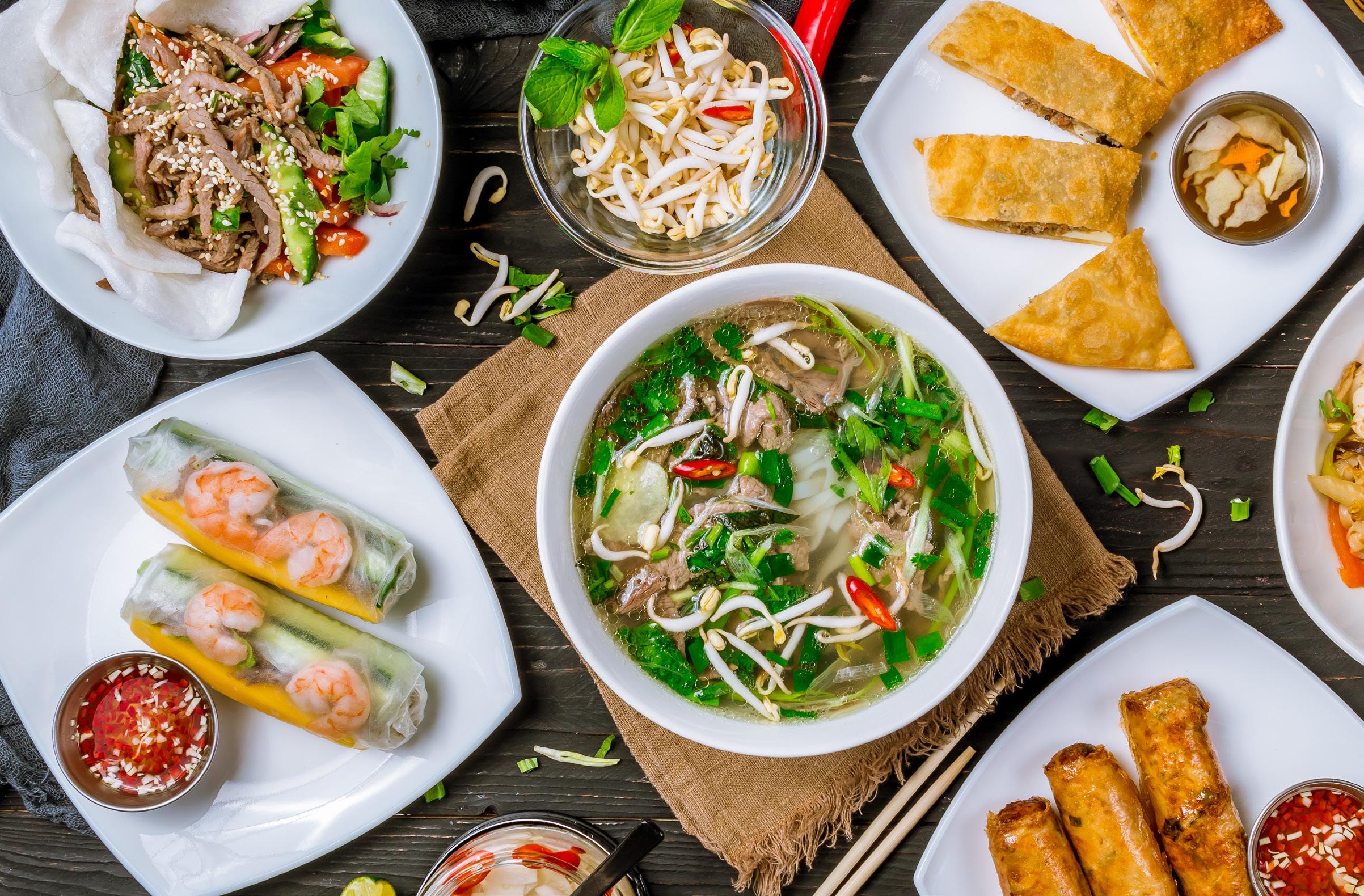
The heart of her cooking practice is a dedication to starting from scratch and building techniques from traditional world food wisdoms. She was an artisan long before it was popular: gardening, foraging, working on organic farms, living off-grid, preserving, fermenting and grain-free baking from scratch.
You can find her recipes, classes, column and blog posts on The Food Coop’s website https://www.foodcoop.coop/blog
Sauces and Spices
Madras Style Curry Powder

Vietnamese and Chinese Inspired Sauces
Oven Fried Shallots
Nước chấm Basic Dipping Sauce
Pickles
Đồ chua Viet Pickled Carrots
Meats and Tofu
Lettuce Wrapped Viet Meatballs
Banh Mi
Vietnamese Braised Chicken
Sheet Pan Shaking Tofu
Salads
Spicy Vietnamese Cabbage and Carrot Slaw
Faux Green Papaya Salad
Soups and Curry
Mi Ga Vietnamese Chicken
Noodle Soup
Sheet Pan Tofu Curry
Makes 1 cup (gluten free and vegetarian)
¼ cup Bragg’s liquid aminos
¼ cup raw cashews
2 tablespoons unseasoned rice vinegar
1 tablespoon toasted sesame oil
1 tablespoon raw honey
1 tablespoon dark miso or fermented black beans

2 cloves garlic, minced
½ teaspoon Chinese five spice (See page 19)
¼ teaspoon freshly ground black pepper
¼ cup raisins
¼ cup boiling water
Grind pepper and make the Chinese five spice mix
Soak the raisins in the boiling water.
Using a powerful blender, combine all the ingredients and blend until smooth.
Refrigerate and use within a month.
Plant based substitute for oyster sauce
Instant Pot or stovetop pot
Makes 1 cup
30g (1 ounce) dried shiitake mushrooms
1 tablespoon fresh ginger, minced
2 cloves garlic, minced
¼ cup Bragg’’s liquid aminos
2 tablespoons dark miso or fermented black soybeans
3 tablespoons maple syrup
1 teaspoon black strap molasses
2 tablespoons raw apple cider vinegar
1 cup water
Blend the ingredients together in a high-speed blender until smooth. You will need to scrape down the sides of the blender several times.
Line an Instant Pot steamer basket with parchment paper. Pour the sauce into the basket. Set in the Instant Pot filled with 1 cup of water. Close the lid and set to High Pressure for 5 minutes. Allow a natural release. To cook on the stove top, add the sauce to a small saucepan and let it come to a low simmer. Simmer until the garlic has mellowed and the flavors have melted, 10 to 15 minutes.
Cool and store in a labeled jar in the fridge. The sauce will keep for several weeks.
"This sauce has super umami powers. Use it as an ingredient in other sauces or as a dipping sauce."
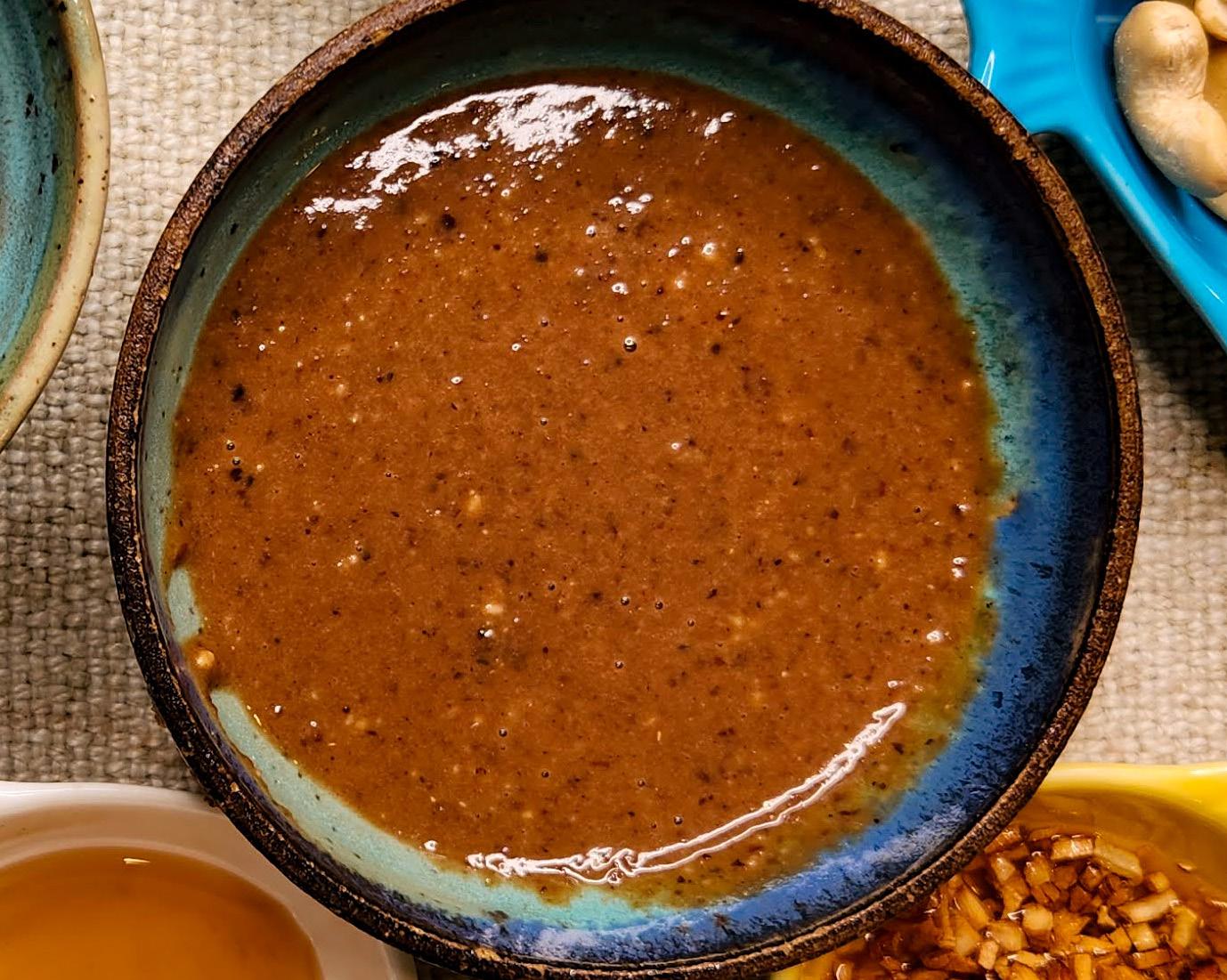
Plant based substitute for fish sauce
4 cups water
¼ cup tamari
1 ounce dried shiitake mushrooms (one cup of dry weight)
¼ cup dried seaweed, like arame
¼ cup dehydrated onion flakes
¼ cup dry stinging nettles
2 tablespoons garlic, chopped
1 teaspoon kelp powder
Rinse the mushrooms. Add ingredients to the Instant Pot. Use the broth cycle or high pressure for 30 minutes with a natural release.
When the brew is finished, refrigerate and infuse overnight, then strain. At this point, bottle whatever you’ll use within a few weeks and freeze the rest in ice cube trays for later use.
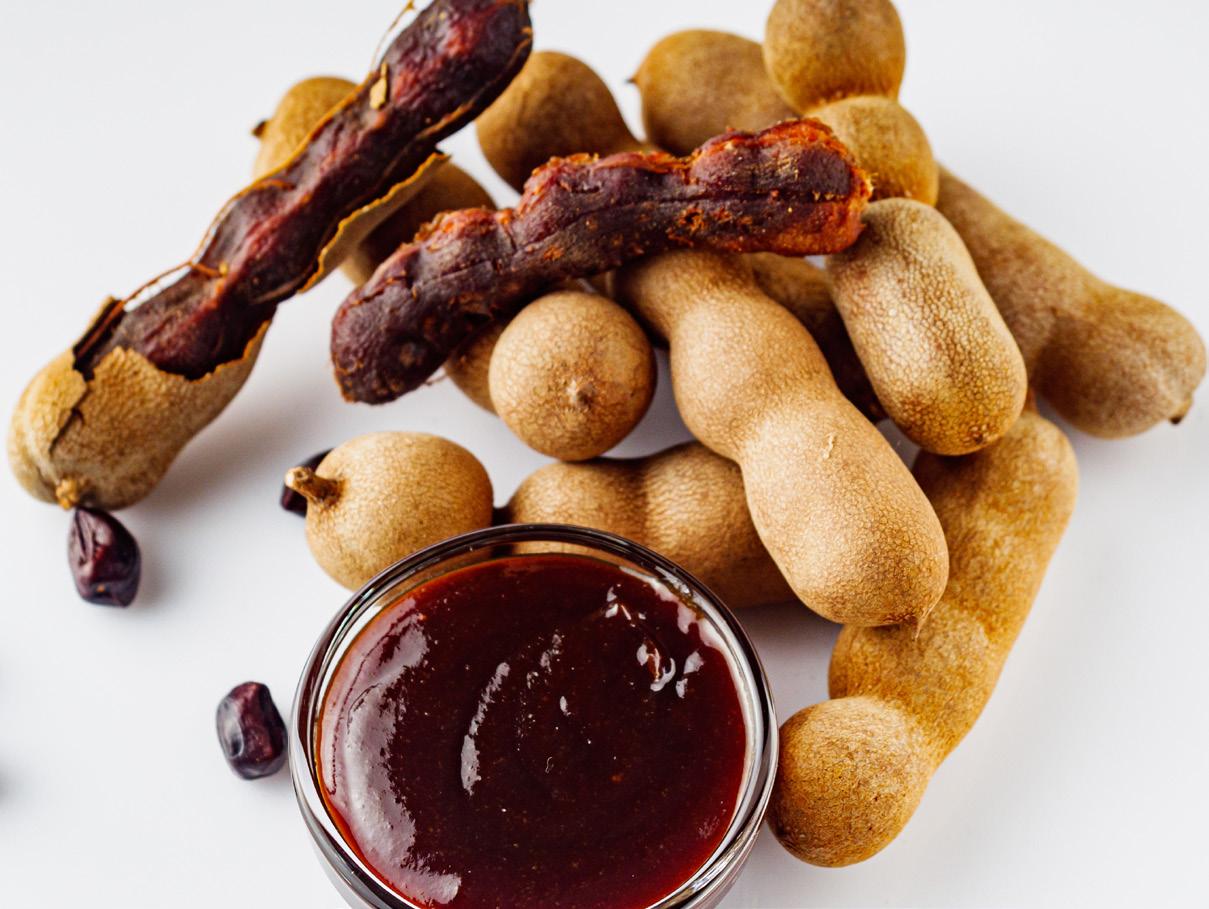
Makes ¾ cup (gluten free)
2 tablespoons tamarind puree (I use Glory Bee brand)
2 tablespoons maple syrup

1 tablespoon tamari
1 teaspoon Bragg’s liquid aminos
1 teaspoon fish sauce
3 teaspoons sriracha sauce
2 cloves garlic, chopped
¼ cup raw cashews
¼ cup water
Using a mini food processor or blender, process ingredients together until smooth. Refrigerate for up to two weeks.
Makes 1/2 cup
For the Sauce
2 tablespoons raw cashews
2 cloves garlic, minced
1 tablespoon cooking oil
¼ teaspoon cayenne pepper
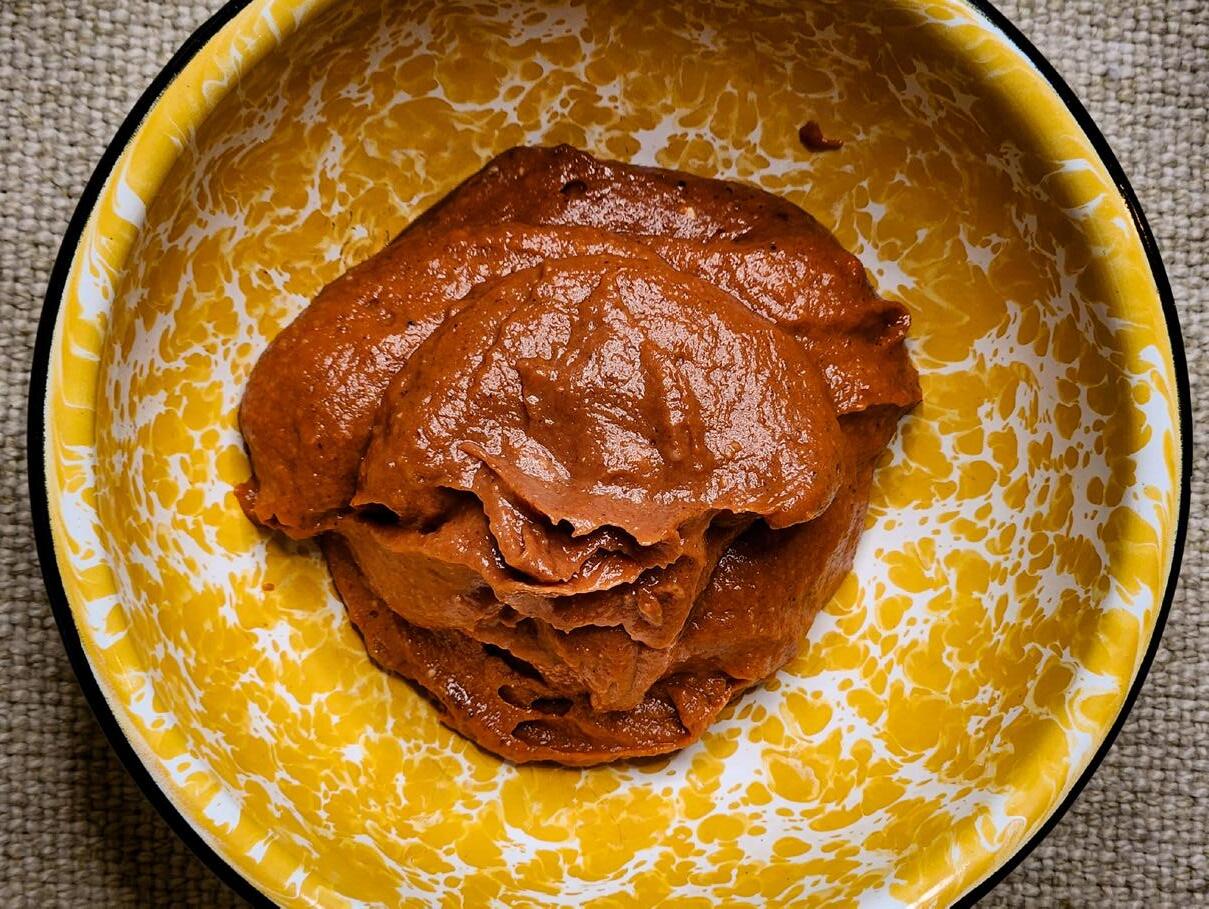
2 tablespoons tomato paste
½ cup homemade hoisin sauce
Assemble ingredients. Make hoisin sauce if needed.
Heat oil and fry the garlic over a medium low heat until golden but not burnt.
Add garlic and oil plus the other ingredients to a high powered blender and blend until smooth.
Store in the refrigerator.
Use this sauce for dipping or as a dressing. It’s also useful as a base for other dipping sauces.
For the Sauce
¼ cup fish sauce
¼ cup water
2 tablespoons coconut sugar
2 tablespoons rice vinegar, or fresh squeezed lemon/lime
1 clove garlic, minced
1 Thai chili, minced (optional)
In a small bowl, combine the liquids and sugar. Stir until the sugar dissolves. Add the garlic and chili. Use immediately, or refrigerate for up to one week if made with vinegar, or two days if made with citrus juices.
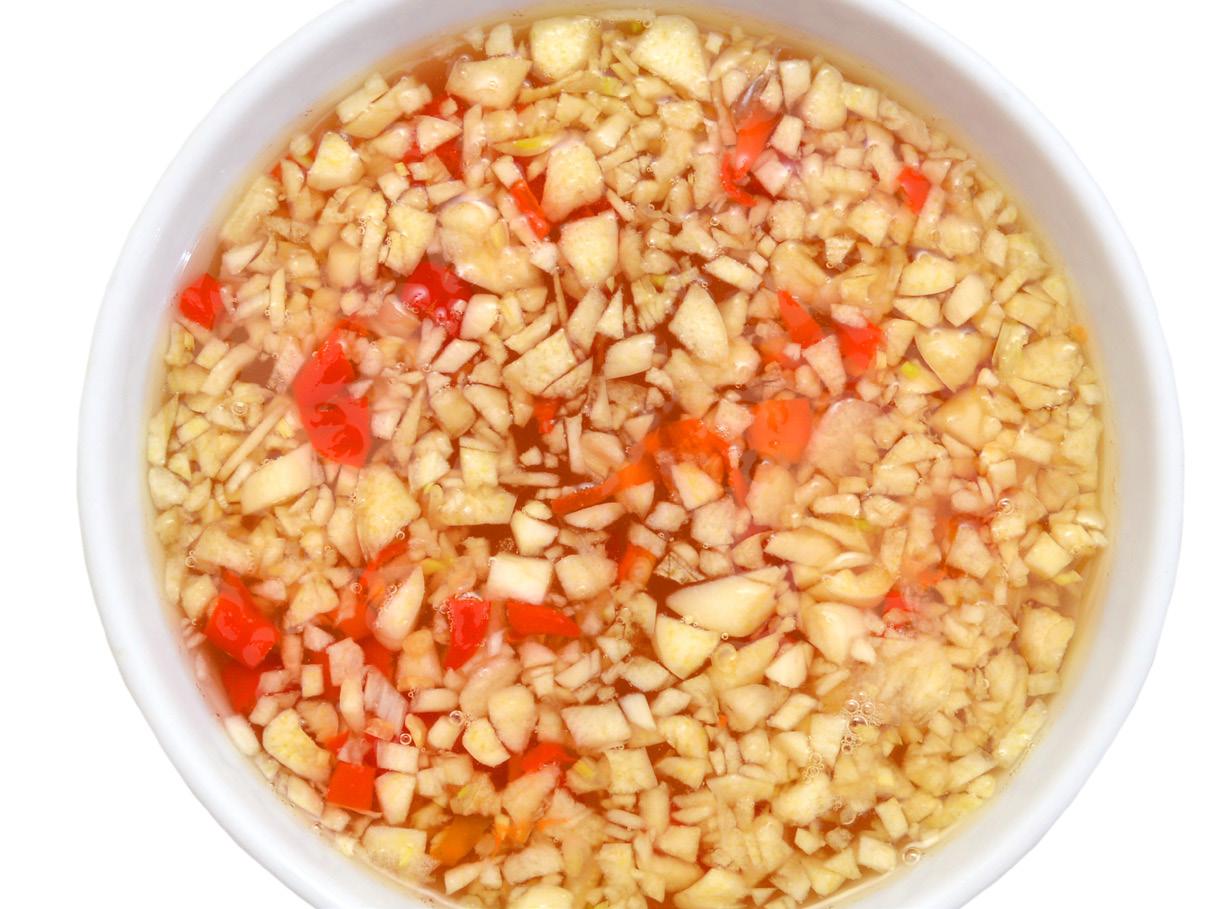

Makes 3/4 cup
For the Curry Powder
¼ cup coriander seed
2 tablespoons ground turmeric
1 tablespoon fennel seed
1 tablespoon cumin seed
2 teaspoons black peppercorns
2 teaspoons ground ginger
2 teaspoons ground cinnamon
1 teaspoon fenugreek seed
1 teaspoon cayenne powder
1 teaspoon anise seed
1 teaspoon brown mustard seed
½ teaspoon cloves
Using a spice or dedicated coffee grinder, grind everything together into a powder. Store in an airtight container and use within a month.
Makes 1 1/4 cups
For the Curry Salt
3 cloves garlic, minced
1 tablespoon fresh ginger, minced
¼ teaspoon citric acid
Zest of one lime
5 tablespoons Madras Style Curry Powder
1 cup Celtic coarse sea salt
Using a small food processor, grind garlic and ginger until fine. Add other ingredients and pulse until mixed. Store in a sealed jar and use until gone.
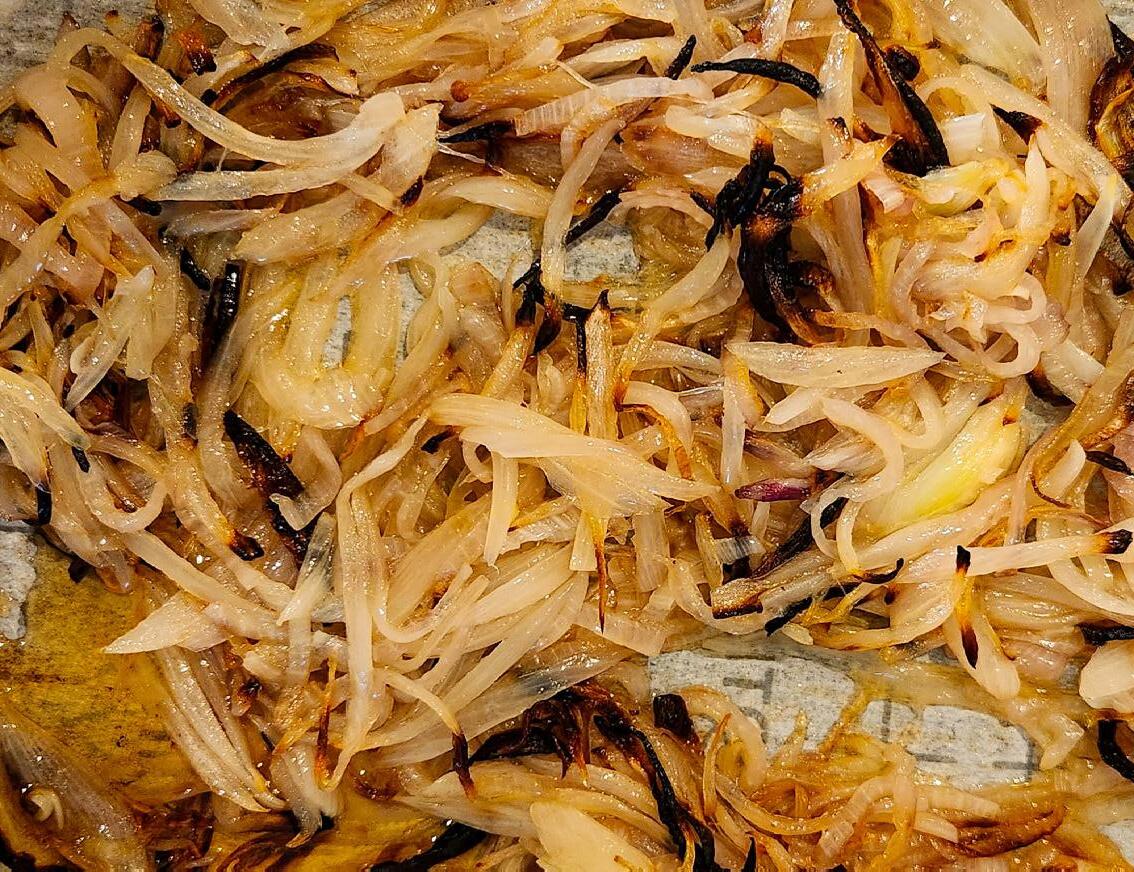
Makes ½ cup plus ¼ cup shallot oil
For the Shallots
2 cups shallots, thinly sliced, about four shallots ½ cup good quality, high heat oil (I use avocado) Sea salt to taste
In a small bowl, combine the liquids and sugar. Stir until the sugar dissolves. Add the garlic and chili. Use immediately, or refrigerate for up to one week if made with vinegar, or two days if made with citrus juices.
Preheat the oven to 425 F. Line a baking sheet with parchment paper. Lay the shallots evenly on the paper and mix in the oil.
Roast for 15 minutes, stir halfway through. Roast for another 5 minutes, watching for a deep golden color without burning the shallots. They will quickly change in the last five minutes. Take the baking sheet out and set the temperature to 200F
Thoroughly press the shallots through a small hand held strainer, set over a small bowl, to catch the shallot oil. Spread the pressed shallots on the baking sheet, sprinkle with salt, and return them to the oven to dry out and crisp up for 15 to 20 minutes.
Serves 2
For Tofu
1 lb firm tofu, cut into 1-inch cubes
1 medium onion, thinly sliced
1 stalk lemongrass, cut into four pieces
2 tablespoons high heat cooking oil, I used avocado
1 tablespoon Madras style curry powder, recipe in pamphlet
½ teaspoon sea salt
For Sauce
2 tablespoons rice vinegar
1 tablespoon fresh garlic, (3 cloves) minced
1 tablespoon fresh ginger, minced
1 tablespoon fish sauce
1 teaspoon shrimp paste (optional but good)
2 tablespoons maple syrup
1 teaspoon sriracha hot sauce
14-ounce can diced tomatoes, or an equal amount fresh
1 can unsweetened full fat coconut milk
Cut the tofu into 1-inch cubes. Drain the cubes, for 15 minutes, between two tea towels with a cutting board as a weight on top. Preheat the oven to 425 F Line a rimmed sheet pan or large casserole with parchment paper so it extends up the edges. The parchment will hold all the curry liquids.
Toss the tofu and onions with the curry powder, oil and salt. Roast for 20 to 25 minutes, stirring after 10 minutes.

Blend the sauce ingredients together using a mini food processor or by hand.
Make thin cuts along the length of the lemongrass stalk with a serrated knife. Then, holding the lemongrass at either end, bend it back and forth. This will release the fragrance and flavor. Add the lemongrass with the coconut, tomato and sauce.
After the tofu and onions are golden, Stir in the lemongrass, sauce, coconut milk and tomatoes. Reduce the heat to 350F and bake for another 15 to 20 minutes.
Taste and correct if needed. Serve with chopped cilantro at the table

Serves 4
For the Soup
4 cups baby spinach or bok choy, halved lengthwise and cut on the diagonal about 2 inches long
2 cups roasted chicken, cut into bite sized pieces
8 ounces dried Chinese noodles, ramen or soba noodles. Cook according to the directions on the package and drain.
1 tablespoon toasted sesame oil, more for the table
2 teaspoons maple syrup or sugar
1 tablespoon rice vinegar
For the broth
6 cups unsalted chicken broth, preferably homemade
2 tablespoons fresh ginger, minced
4 cloves garlic, minced
1 medium onion, chopped
2 teaspoons fish sauce
1 tablespoon plus 1 teaspoon soy sauce
1 teaspoon Chinese five spice, preferably freshly ground
1 tablespoon toasted sesame oil, more for the table
2 teaspoons maple syrup or sugar
1 tablespoon rice vinegar
½ cup cilantro, roughly chopped
2 scallions, sliced
toasted sesame oil
freshly ground black pepper
Add the chicken broth, ginger, garlic, onion, fish sauce, soy sauce and Chinese five spice to the Instant Pot. Set to the broth cycle, or 30 minutes at high pressure with an instant release. Alternately, in a soup pot, bring the ingredients to a boil and simmer for 30 minutes. Strain the broth through a sieve lined with muslin. The broth should be clear. Bring the broth back to a simmer using the saute setting. Add the spinach or bok choy and cook for about 1 minute. Taste and add the toasted sesame oil, rice vinegar and maple syrup or sugar. Correct as wanted. Keep the broth hot at a low simmer.
While the broth is cooking, prepare the other ingredients. Divide the noodles and chicken between four deep bowls. Lightly dust the chicken with a pinch of Chinese five spice. Add the hot broth and top with the cilantro and scallions. Let the diners add fresh black pepper if they wish.
Extra tip: keep the bowls, noodles and chicken warm in the oven set at 140F

Serves 2
1 to 2 lbs boneless chicken thighs (There’s enough sauce for up to two pounds of meat.) Sauce
¼ cup hoisin sauce, homemade preferred, recipe in packet
¼ cup tomato paste
3 cloves garlic, minced
2 tablespoons honey
2 tablespoons tamari or soy sauce
1 tablespoon rice vinegar
½ teaspoon Chinese five-spice, recipe in packet
2 teaspoons toasted sesame oil
Blitz the sauce ingredients, except sesame oil, together in a small food processor or with a whisk
Line an Instant Pot steamer basket with parchment paper. I crinkle up a length of parchment into a ball and unwrap it. This makes it easier to fit into the round steamer. The parchment should come up the sides to contain the sauce and chicken juices. Add 1 cup of water to the bottom of the Instant Pot.
Add the chicken thighs to the steamer basket and coat with all the sauce. Set the instant Pot to 15 minutes per pound, at high pressure with a natural release.
When done, use the parchment paper to lift the stew out of the steamer. Drizzle the sesame oil on and stir in. Eat the braise warm with rice and vegetables, or chill and slice or shred as a banh mi sandwich filling.
Serves 2
Plant Based Main
For Tofu
1 lb firm tofu, cut into 1-inch cubes
½ of a medium large red onion, thinly sliced
2 tablespoons high heat cooking oil, I used avocado
¼ teaspoon sea salt
¼ teaspoon freshly ground pepper
For Sauce
1 tablespoon fresh garlic, (3 cloves) minced
2 tablespoons maple syrup
1 tablespoon dark molasses
1 tablespoon tamari
2 teaspoons liquid aminos, Braggs or coconut
¼ cup rice vinegar
2 tablespoons raw cashews or unsalted peanuts
1 teaspoon cornstarch
To Finish
Black pepper to taste
Lime wedges and herbs served at the table
Cut the tofu into 1-inch cubes, sprinkle with salt and pepper. Drain the cubes, for 15 minutes, between two tea towels with a cutting board as a weight on top. Preheat the oven to 425 F Line a sheet pan with parchment paper. Rub the oil plus salt and pepper into the tofu and onions. Roast for 20 to 25 minutes, stirring after 10 minutes.
Meanwhile, using a small food processor, blend the sauce ingredients together.
After the tofu and onions are crispy and golden, add the sauce and combine. Roast for another 8 minutes, or until the sauce thickens and coats the tofu. Sprinkle ¼ teaspoon freshly ground black pepper over the tofu

Serve with a squeeze of lime, if wanted, and fresh herbs

Serves 6
For the Salad
1 small green cabbage, shredded
3 medium carrots, scrubbed and shredded
½ cup scallions, thinly sliced
½ cup fresh mint, shredded Cilantro for garnish
Optional salad additions
2 cups shredded chicken, or baked tofu thinly sliced
½ cup roasted peanuts, chopped
For the Dressing
1 clove garlic, minced
1 tablespoon maple syrup
2 tablespoons rice vinegar
2 tablespoons fresh lime juice
2 tablespoons fish sauce
3 tablespoons salad oil, I used avocado
¼ teaspoon cayenne pepper
In a salad bowl, toss the cabbage, carrots, scallions and mint together. I use a food processor to shred my cored cabbage and carrots.
Using a mini food processor, or by hand, blend the dressing ingredients together until smooth. If you’ll eat the entire salad for one meal, then dress it right before eating. If not, then only dress the portions you’ll eat. The oil in the dressing will otherwise make it soggy.
Garnish the individual salad bowls with cilantro and peanuts.

Serves 2-4
Granny Smith apples make a decent substitute for green papayas, and the salad’s zowie flavor combinations justify the adaptation. This salad has it all: sweet, sour, heat, crunch and color. Serve it any time of year and feel free to add seasonal produce and herbs. I especially appreciate it in late winter when longing for spring days and sunshine.
2 Granny Smith apples, peeled and shredded
3 medium carrots, shredded
2 cups shredded daikon radish, about a 6 inch long piece with a 1 ½ inch diameter
½ cup mint, shredded
½ cup cilantro, chopped or just leaves
¾ cup roasted peanuts or cashews
½ cup fried shallots, recipe in pamphlet
Optional avocado slices
Optional addition of protein: chopped eggs, sliced pork
loin, smoked or baked firm tofu, etc.
For the Dressing
2 limes juiced plus zest

spring roll nem rán
spring roll nem rán
spring roll nem rán
spring roll nem rán
spring roll nem rán
spring roll nem rán
spring roll nem rán
spring roll nem rán





All Viet rice paper rolls follow a similar pattern, so once you’ve got it down, you’re set to improvise and have some fun. Have an interactive meal and allow your diners to roll their own. You provide a dinner plate to roll on, set out several shallow bowls of water for soaking the papers, filling options and premade dipping sauces. Here are a few tips and guidelines to get you going.
• Work on dinner plates.
• Fill large shallow work bowls or casseroles with 2 inches of hot water. Refill them when they cool.
• Prepare the fillings ahead of time and lay them out on plates where everyone can reach.
• Matchstick size the vegetables, cut the herbs into bite-size pieces, remove the lettuce spines, and cut the proteins into ribbons or sticks.
• Make a basic dipping sauce ahead of time.

• Slide and submerge a rice paper into the warm water. Wait a minute until it’s tacky and pliable.
• Lay it on the plate, and fill the center with fillings, start with lettuce as a foundation, and improvise from there. Lay flowers or other beauties so they’ll show through the papers.
• Bring the left and right sides into the center. Start closest to you, the bottom, and fold it over the filling. Apply just enough pressure, not too tight so the ingredients puncture the rice paper, but tight enough so the ingredients don’t fall out.
• Practice makes perfect!
Remember, you want to get a bit of flavor from each ingredient, but not overfill and make it difficult to roll.
• Lettuces, spring greens, arugula, sprouts, edible flowers
• Herbs like—dill, cilantro, mint and basil
• Matchstick veggies—carrots, daikon, radishes, cucumbers
• Mung bean cellophane noodles or rice noodles
• Baked tofu, smoked fish, shrimp, chicken, crab, ham, tempeh, turkey
• Avocados, mayo, spiced mayos
Bánh Mì (BUN-mee) is bread in Vietnamese, but also refers to the sandwich, a culinary fusion of French and Vietnamese, and an example of how linked food and history are.

The sandwich story begins under French colonial rule, somewhere between 1858 and 1954. The French couldn’t live without baguettes, and accompanying cold cuts, butter, cheese and pâté. So, wheat flour was imported, bakeries opened, they locally cured ham to French tastes and the Viet people trained to make the French favorites. During this period, the Vietnamese also ate baguettes with butter and pâté, but that soon changed after the French left in the 1950s.
Because of supply issues, Viet bakers added rice flour to baguettes and the result was a crisper crust. The cold cuts and pâté returned to the prior Asian seasonings. Cheaper mayonnaise replaced expensive butter. They added pickled carrots and radishes, along with chilies, cucumber and cilantro. The French baguette with charcuterie was now born on the streets of Saigon, a distinctive sandwich. It wasn’t long until food carts across the country were selling these tasty and affordable sandwiches. After the fall of Saigon in 1975, Viet refugees arrived in American and European cities, and bánh mì became an international sandwich sensation.
Basic bánh mì
Its flavor profile is quintessentially Vietnamese, combining aromatic, salty, sour, umami, and sweet with some heat in one sandwich.
BREAD: a hand span of an airy, crispy baguette or bolillo roll (toast the bread and keep a hinge)
PROTEIN: Vietnamese ham, steamed pork, meatballs, baked tofu, fried eggs, chicken
VEGETABLES: sliced cucumber, pickled carrot & daikon
HERBS & SPICES: crisp cilantro, mint, basil, and/or fresh chilis
FATS: pâté, butter, mayonnaise, avocado
SEASONINGS: Salt, pepper, soy sauce, liquid aminos
Don’t overstuff with protein, because a balanced bánh mì is a salad in a sandwich, with a 1 to 1 ratio of protein to veggies. Prep the bread: Rub the crust with wet hands and crisp in a 350 F oven for about 5 minutes. Let it cool, slit the bread open, leaving a hinge, hollow out some insides to make room for the filling.
Spread fat of choice on, season the fat, layer the filling on the bottom and top with veggies, pickles, chilies and herbs. Eat: Close and cut crosswise or keep whole. Enjoy!
Bánh mì Xiu Mai (pork meatball sandwich) — pork meatballs marinated in a local flavored sauce, usually with a tomato, fish or soy sauce base. Serve with cilantro to get the true Vietnamese flavor.
Bánh mì thịt nướng (barbecue pork sandwich) — A very popular Vietnamese Sandwich for meat lovers. This is a grilled pork belly or grilled pork shoulder. It’s an authentic style and one of the true original Banh Mi from the 1950s.
Bánh mì chả cá (fish patty sandwich)—Fried fish cakes placed in the baguette, served with Sriracha sauce, seasoning, and carrot/ daikon pickles with veggies.
Bánh mì chay (vegan sandwich) — eaten twice a month during the full and half-moon celebrations. Most Buddhist followers have a vegan day twice per month.
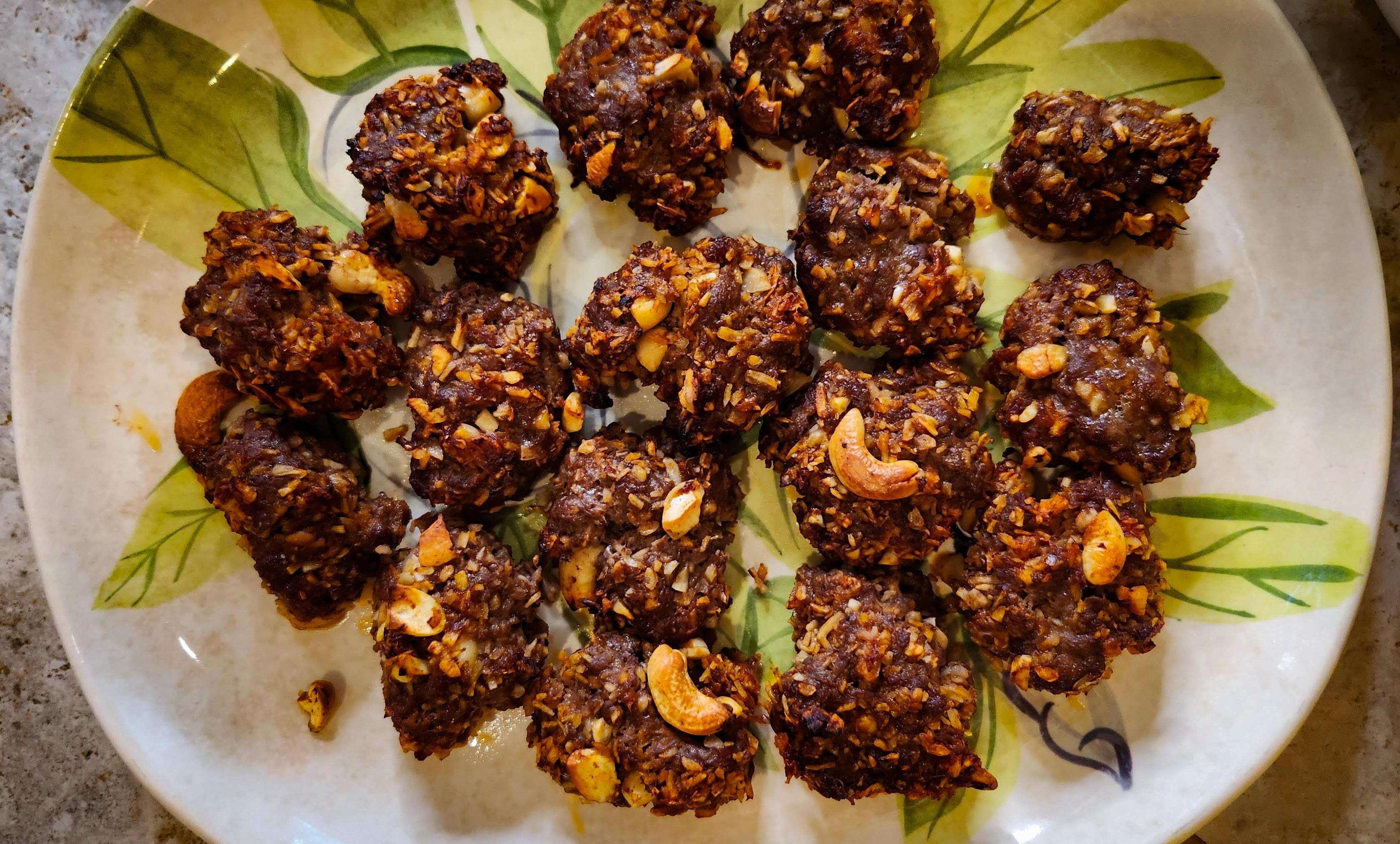
Makes 8 large meatballs
1 lb ground beef
2 tablespoons tomato paste
1 tablespoon Bragg’s Liquid Aminos
1 tablespoon fish sauce
1 tablespoon fresh ginger, minced
2 cloves garlic, minced
¼ teaspoon cayenne pepper
1 teaspoon Chinese five-spice, recipe follows
1 tablespoon tapioca starch
⅓ cup raw cashews or peanuts, chopped
⅓ cup unsweetened coconut flakes
¼ cup dehydrated onion flakes
Makes ¼ cup
Toast the star anise, cloves, peppercorns and fennel. Mix in the cinnamon and using a spice grinder, grind into a powder.
1 tablespoon star anise pieces
1 tablespoon fennel seeds
1 tablespoon ground cassia cinnamon
1 teaspoon whole cloves
1 ½ teaspoons Sichuan pepper or black peppercorns
Preheat the oven to 425 F. Line a rimmed baking sheet with parchment paper.
In a mixing bowl, with clean hands, combine the ingredients with the ground beef, as you would for meatloaf. Divide evenly into two large balls. Continue to divide by halves until you have 8 balls. Slightly press each ball into a patty.
Bake for 12 to 15 minutes. The juices should run clear with no raw or underdone meat.

Makes 3 cups

2 cups shallots, thinly sliced, about four shallots ½ cup good quality, high heat oil (I use avocado) Sea salt to taste

In a small bowl, combine the liquids and sugar. Stir until the sugar dissolves. Add the garlic and chili. Use immediately, or refrigerate for up to one week if made with vinegar, or two days if made with citrus juices.
Preheat the oven to 425 F. Line a baking sheet with parchment paper. Lay the shallots evenly on the paper and mix in the oil.
Roast for 15 minutes, stir halfway through. Roast for another 5 minutes, watching for a deep golden color without burning the shallots. They will quickly change in the last five minutes. Take the baking sheet out and set the temperature to 200F
Thoroughly press the shallots through a small hand held strainer, set over a small bowl, to catch the shallot oil. Spread the pressed shallots on the baking sheet, sprinkle with salt, and return them to the oven to dry out and crisp up for 15 to 20 minutes.
Dried Noodles and Rice
Chinese style Wheat Noodles
Flat Rice Noodles (Pad Thai)
Bean Thread Noodles
Jasmine Rice
Rice Papers
Round Rice Noodles (Maifun)
Buckwheat Noodles
Chili Garlic Sauce
Fish Sauce (I like Red Boat)
Hoisin Sauce
Bragg Liquid Aminos
Soy Sauce and Tamari
Rice Vinegar
Toasted Sesame Oil
Sriracha
Other Essentials
Coconut Oil
Coconut Milk
Fresh chilies like: Thai, Jalapeno, Fresno and Serrano
Fresh herbs like: Cilantro, Mint and Thai Basil Garlic, Onions, Shallots, Scallions, Chives
Ginger, Lemongrass, Galangal Lemons and Limes
Dried Shiitake Mushrooms, or dried mixed Mushrooms
Tofu
Chinese Five Spice
Pepper, both black and white
Madras style Curry Powder



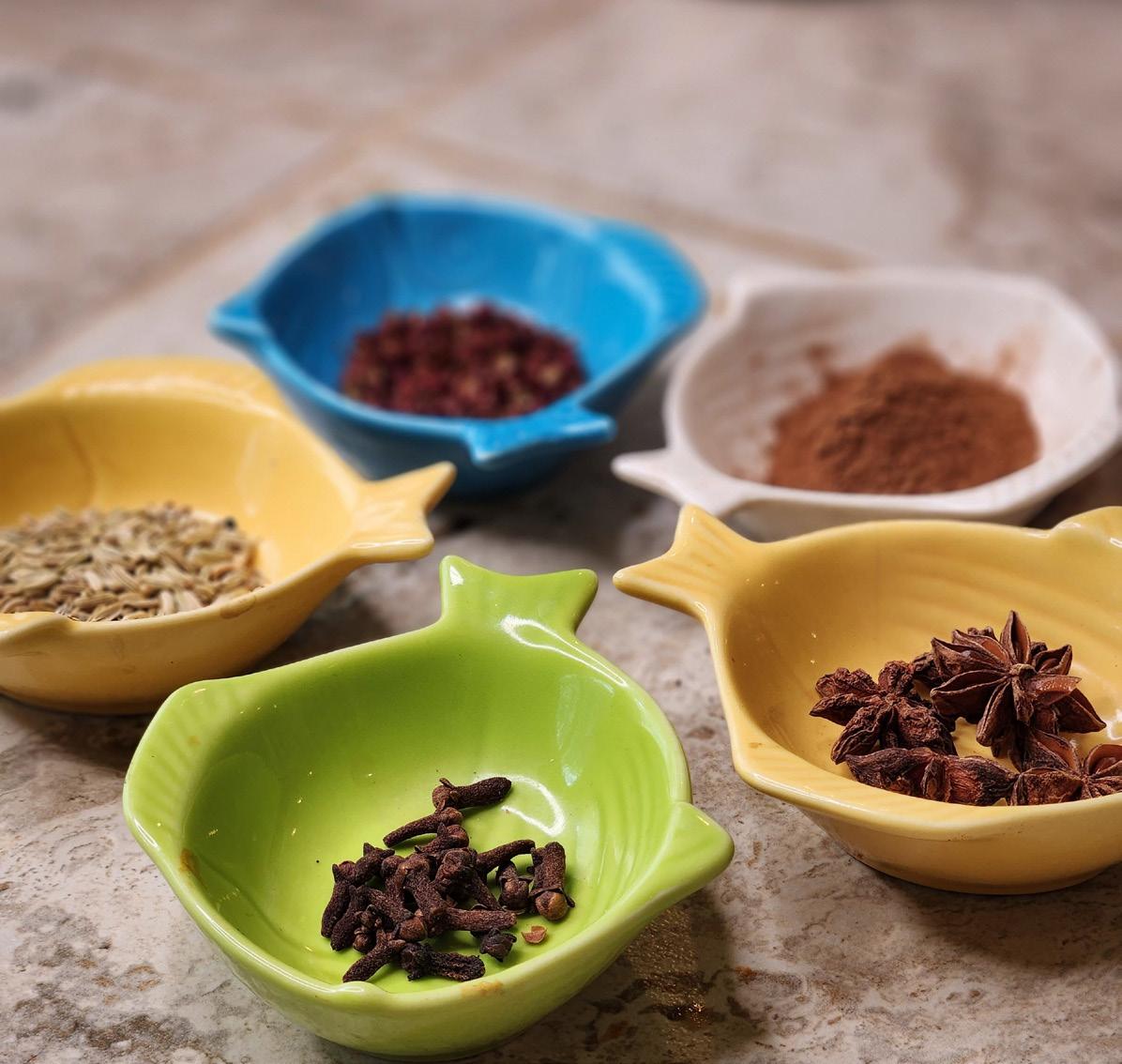
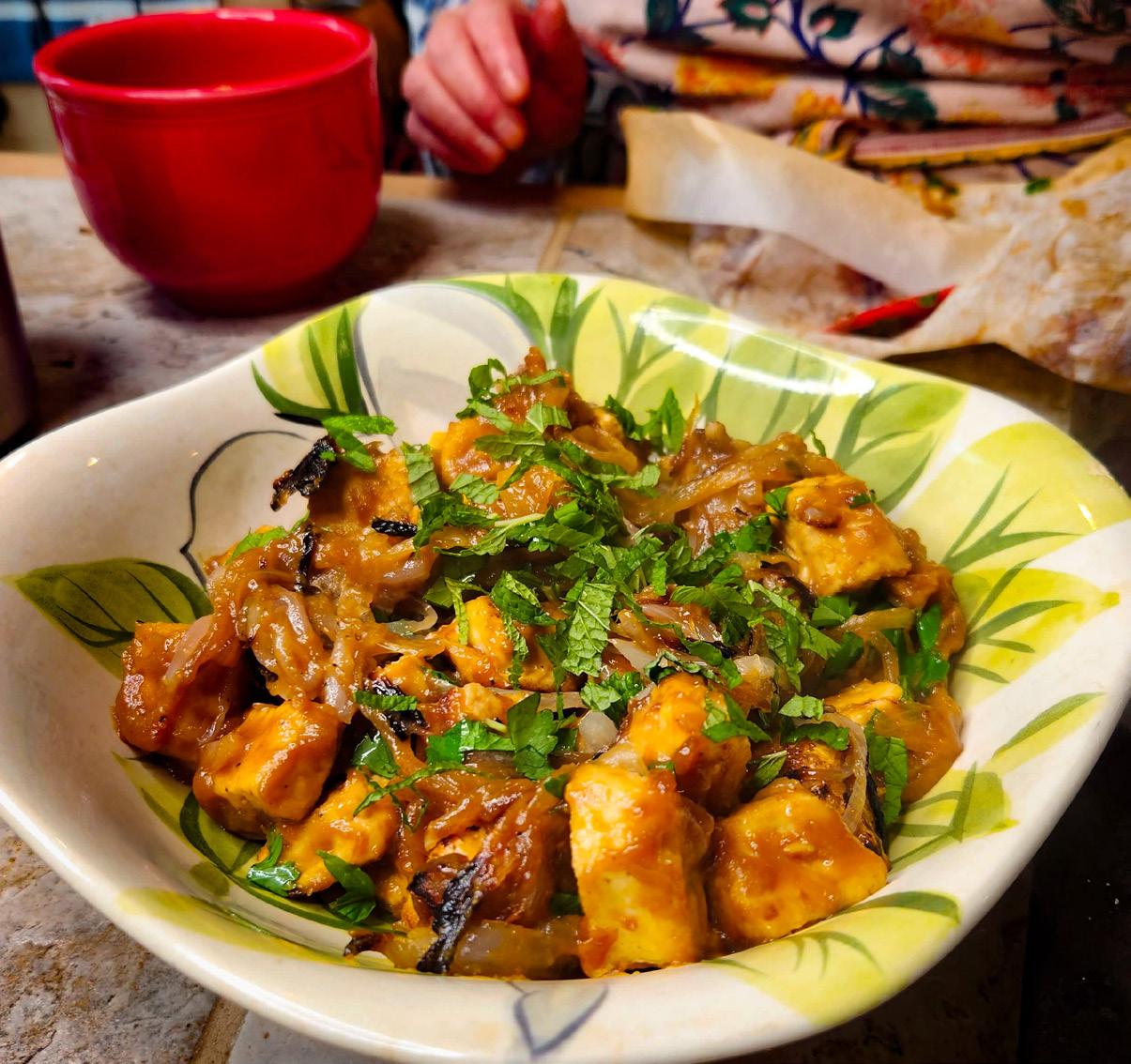

And be entered to win a $100 gift card
1. Tear out this page
2. Complete activities on the card to make a BINGO

3. Once complete, return card to the box up front at the Co-op events board
Name:


Member #:

Phone/E-mail:
What did you learn?
13. Find a cookbook or novel with pho as the theme.
14. Watch a Vietnamese cooking show in Vietnamese. 15. Go to an outdoor market in Vietnam via Youtube. Beware if you’re squeamish!
16. Look at three top rated Vietnamese restaurant menus in different parts of the USA and decide what you’d order?
17. Decide which recipes you’ll cook from the packet and cook a meal.
18. Find a Vietnamese cooking blog in English and choose a recipe to try.
19. Discover how fresh rice papers are cooked?
20. Watch someone making fresh rice noodles.
21. Add some Asian greens and herbs to your grocery list. 22. Look at a map of Vietnam, find a place you’d like to visit, and explore its food and culture.
23. How do Thai and Viet cooking differ? How are they the same?
24. Take a photo of a vietnamese recipe you made and send it to the Co-op
1. Whip up the recipe packet hoisin sauce.
2. Practice the Vietnamese dipping sauce in the recipe packet.
3. Sleuth what kinds of fish sauces the Coop sells, and is there a plant based alternative?
4. Make some lettuce wraps with Viet flavors.

5. Find five pantry items from the packet that you’d like to try, and do some research about them.
6. Discover how fish sauce is made.
7. What differences are there between northern, central and southern Vietnamese cuisines?
8. What foods and techniques did the French bring to Vietnam? What are some creative ways Viet cooks use them?
9. What cooking techniques and tools from the Chinese do Viet cooks use?
10. Make the carrot pickles from the recipe packet.
11. Wrap some spring rolls.
12. Explore the history and culture of banh mi.


